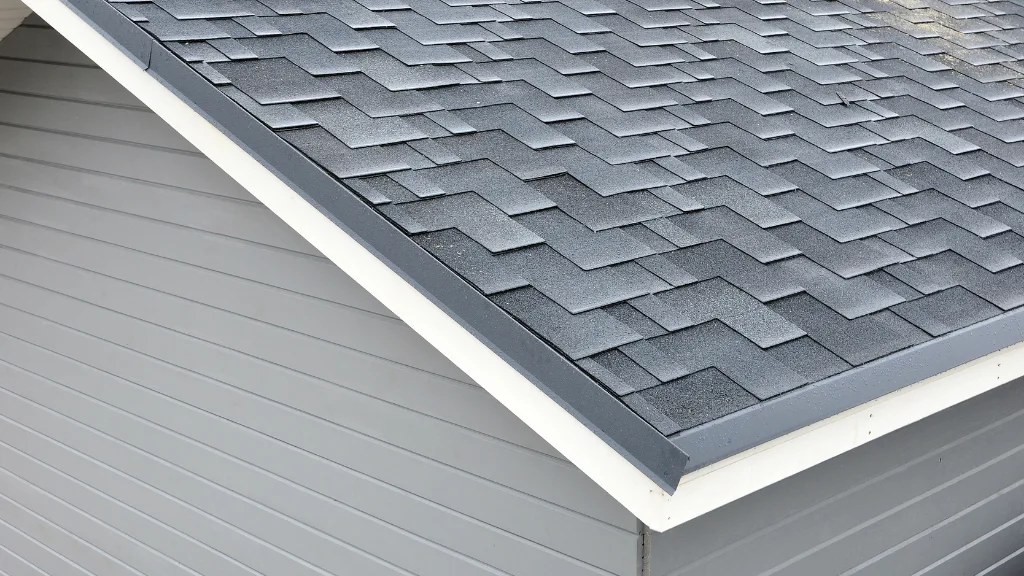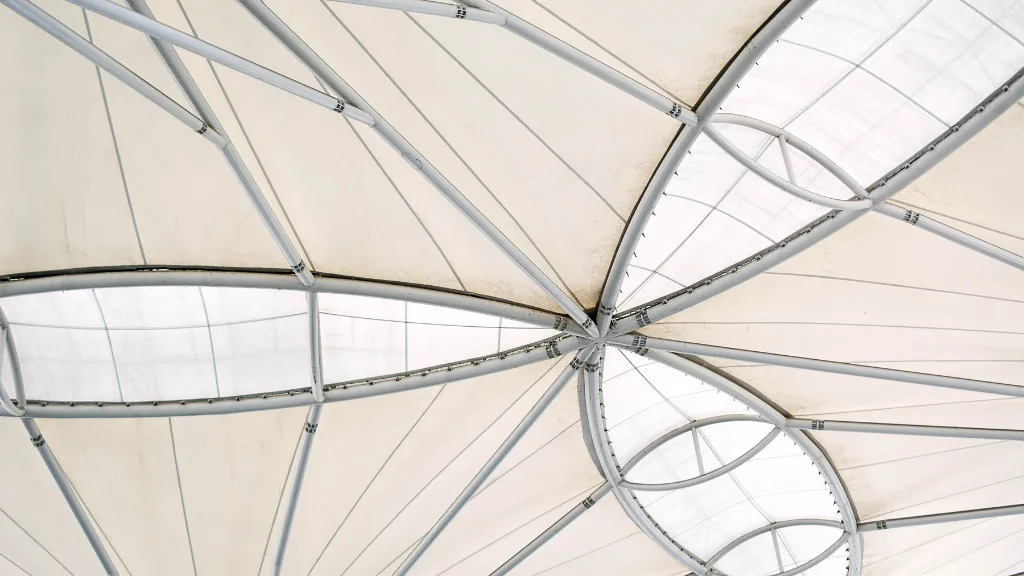
There is a lot of debate over the benefits and drawbacks of rubber roofing. Some people swear by it, while others say that it’s not worth the money.
In this post, we will discuss both sides and let you decide for yourself which is best for your home or business!
What is Rubber Roofing?
Rubber roofing is a type of roof known as EPDM. Rubber roofing is gaining popularity among homeowners because it has many advantages and a few disadvantages.
EPDM roofing is less expensive than other types of roofing. Rubber roofing is a synthetic material that can be used in place of traditional asphalt shingles. It’s made up of chemicals, oils, and rubber, making it extremely durable against the elements!
A rubber roofing is a type of waterproof membrane used to cover roofs, made out of rubber.
Rubber is applied either on top of another material or by itself on low-slope roofs. The membranes are usually black in color but may also be brown or white depending on the manufacturer.
Rubber roofs are used as a lower cost and effective option on homes and buildings. Their main advantage is that they can be applied over an existing metal roof, using the screws already in place.
They provide excellent weatherproofing and fire resistance, making them suitable for heavy commercial or industrial use.
Because rubber does not warp or rot like traditional roofing materials, it is also a good choice for areas where severe weather or fire may be concerned.
Rubber roofs can be applied either as a single-ply membranes or multi-ply membranes. The difference between these two types of rubber roofing is the number of plies used and how they are attached to the building structure.
Single-ply sheets are laid down and attached with adhesives. Multiple sheets are made up of multiple layers, which are either glued or mechanically seamed together.
The seams can be heat-sealed or glued depending on the manufacturer’s specifications.
What are the Pros of Rubber Roofing?
- Rubber roofing is great for those who live in areas with high winds and rain.
- The material can withstand extreme weather conditions, which makes it perfect for roofs!
- It’s also extremely lightweight compared to other types of shingle, so you won’t have a difficult time installing your new rubber roof.
- Another major benefit of going with a rubber roofing is the cost when it comes to repairs.
- Because they are extremely durable, you won’t have to spend as much money on repairs or maintenance in the future!
- It’s also great for commercial buildings, making it easy to sell your property.
- It is lightweight compared to other types of shingle and is resistant against fire and insects, which makes it a good choice for areas with high insect activity.
- It can help protect the structure of your home or building from damage that might be caused by termites or other pests.
- Because rubber lasts long, it can be an excellent choice for residential or commercial buildings in areas where there are harsh conditions.
- It is extremely durable against heat and cold, so you won’t have to worry about dealing with leaks in the wintertime!
- It also required fewer seams than other types of roofing, which saves time and money during installation.
- Rubber roofs are very easy to set up and don’t require a lot of training or experience when it comes to installation!
- You can expect minimal maintenance when it comes to a rubber roof. Because of their durability, they don’t require cleaning and can last for decades without needing replacement!
- It is Eco-friendly since recycled materials are used to produce it. Manufacturers are able to drastically reduce the amount of waste in landfills by recycling rubber roofing!
- Rubber roofing is not usually prone to crumbling or cracking, which means that you won’t have to worry about any leaks or other damage.
What are the Cons of Rubber Roofing?
- One major disadvantage to rubber roofing is that it’s not as aesthetically pleasing compared to asphalt shingle roofs.
- Because they come in mainly black or grey, you won’t be able to achieve a nice uniform look with your metal roof.
- The material also cannot hold up very well to sunlight, which makes it difficult for the material to lighten in color.
- If you’re looking for a beautiful new roof that is easy on your wallet and resists cracking, peeling or wearing down over time, rubber roofing may not be as durable as shingle roofs after all!
- These types of roofs are susceptible to degradation from ultraviolet rays, which can cause the material to crack and peel.
- You need to wait for the dry season when installing rubber roofing.
- The installation process is only recommended during dry weather and should not be done when it’s raining.
- If you install the material in wet conditions, there may be issues with adhesives failing or peeling up around nails and screws!
- Should only be installed by a professional, which means that it can be time-consuming and cost you more in the long run.
- If your roof is bigger than average, then it can take even longer to install rubber roofs!
- The material might not last as long as other types of shingle either.
- Asphalt lasts for about twenty years on average but rubber only holds up well against weather for about ten years.
- Asphalt roofs are also more cost-effective than rubber roofing, so you might save money in the long run!
The Three Main Types of Rubber Roofing
There are three main types of rubber roofing, each with its own unique advantages and disadvantages. These three types include Single Ply Membrane, BUR or the Built-up Roofing, and the Modified Bitumen.
Single Ply Membrane
The Single Ply Membrane is the most widely used type of rubber roofing. It has many of the same advantages of single-ply membrane roofs, although it uses only one layer, unlike its two-ply variant.
This means that if normal wear and tear does occur on this type of roof (such as cracks or rips), then rather than having to replace the system as a whole, only a small piece of it has to be repaired.
Single Ply Membrane roofs are also easy and inexpensive to install, have a long lifespan that ranges from 20-25 years or more with proper care, and they are also easy to repair by simply replacing the affected area.
The single ply membrane roof is also lightweight, which makes it excellent for flat and low-pitched roofs that are at risk of wearing or tearing.
BUR or the Built-up Roofing
The BUR type of rubber roofing – also known as the built-up – involves applying multiple layers of finishing to a substrate, such as gravel and sand asphalt. BUR roofs are commonly installed on wood decks or paper products.
The BUR roof has the same advantages as the single-ply membrane roof, but it is even more durable and can last up to 30 years with proper care.
BUR roofs are also less expansive than other alternatives because they use multiple layers of asphalt which is cheap, easy to find, and requires little maintenance.
However, BUR roofs are more expensive to install than single-ply membrane roofs because they require additional layers of asphalt and gravel.

Modified Bitumen
The Modified Bitumen is another type of rubber roofing that is almost identical to the Single Ply Membrane, however, it uses a modified form of bitumen instead of being made of pure rubber.
This modified version of the material is suitable for roofs that receive a lot of heat or fire exposure, and it can even be used for flat and low-pitched roofs as well as pitched rooftops with steep slopes.
Modified Bitumen roofs also have many of the same advantages as normal single-ply membrane roofs, such as being easy to install, having long lifespans, and being relatively cheap.
However, like BUR roofs, Modified Bitumen roofs are more expensive to install than normal single-ply membrane roofs because the latter only requires the application of one layer of rubber instead of modified bitumen which can require up to four layers or more depending on how it is applied.
Testing and Other Factors
All three types of rubber roofing can be tested before they are installed onto a home or structure with the same procedures, which requires them to be placed under high heat that is similar to direct sunlight.
This type of testing helps prevent the material from deforming or becoming discolored when exposed to extreme temperatures for an extended period of time.
It can also help prevent the rubber roofing material from deteriorating too quickly, which is something that happens with most types of roofs when they are exposed to sunlight for long periods of time.
The life expectancy of all three types of rubber roofing depends on several factors, including how it is installed, where the home or structure is located, how it is maintained after installation, and the quality of the actual material.
For example, most rubber roofs have a life expectancy between 20-25 years or more when they are installed properly on homes with flat rooftops in climates that do not receive excessive amounts of precipitation.
Best Practices for Care
All three types of rubber roofing require little maintenance once they are installed and will last a long time if proper care is given.
The following tips can help homeowners and business owners keep their rubber roof in top condition for as long as possible:
- If there is any dirt, moss, algae or water on the rubber roofing material then it should be cleaned off immediately to prevent damage from occurring.
- The rubber roofing should be checked regularly for any cracks, holes or other damage that could cause leaks or allow moisture into the home or structure underneath it which can accelerate wear and tear on the roof.
- In climates with a lot of rain, snow, sleet or hail then roofs should be properly cleared off so that water does not pool up on the rubber roofing.
- This increases the risk of damage from moisture and falling objects.
- The actual rubber material should also be checked regularly to see if it has begun to change color or become discolored due to sunlight exposure which can significantly reduce its life expectancy.
- If white streaks begin to line the top of the rubber roofing then it is a sign that the material needs to be replaced soon, and if it becomes very dark brown or black then it means that the roof has been exposed to elements for way too long and must be replaced immediately.
- The rubber roofs should also be kept free of any debris such as leaves and twigs so they can continue to absorb sunlight and remain cool.
- If they are not cleaned off then this can also cause damage to the roofing material or its sealant, which will lead to leaks in the future.
Final Thoughts
Rubber roofing is extremely durable and resistant against cracking, peeling, or wearing down over time.
However, it’s important that you compare all of your options before choosing a rubber roof for your home or business! You may find that it is just not worth the extra money when compared to other types of materials.


